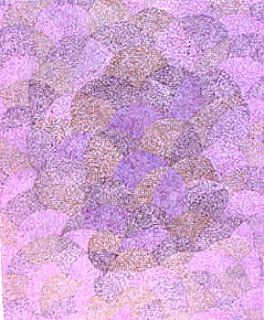The Big Rock Candy Mountain
48" x 60" acrylic on canvas 2009.
They watched him create this painting in class. He always paints in class because it gives his students a chance to see his creative process. He keeps his eye on what his students are doing while leaving them to pursue there own creative directions. They do not try to imitate him. It's alright if they do because this is a beginning class and we all start by imitating. He began his career with Van Gogh and Nolde and Gorky and many more. All art is evolved from other's: it is the artist's task to make their ancestors their own. His are apparent in all his work.
They asked, "Where do you come up with these images?"
"From years of memories, painting experience, knowledge of art history and the need to change and
evolve."
"Do you work from drawings"
"I draw as a form of thinking and these become paintings. They are a point of departure; generally I start from lines and shapes. The source of my current paintings are the Sangre de Cristo Mountains of New Mexico. I hike them in the summers."
"Why paint them so abstractly?"
He replied, "I began this abstract series in 2008 after spending 12 years learning to paint realistically, working from photographs that I had from my past, including hikes in the mountains. Painting realistically was a challenge for me to do what I had never done."
"You mean you were not taught to paint realistically?"
Waterfall #3 36" x 48" 2007
"No. In the 1950s, we were encouraged to be abstract nonrepresentational artists and the rules were tossed out. It was a fun time in "the art sandbox", but for me it was not satisfying. I discovered I was not nonrepresentational; I liked to paint stories. I had to learn the rules on my own by studying art history, looking at paintings and teaching. And I shared studio space with an artist who was taught the basics and from whom I was willing to learn.
"In 2008, my inner muse told me that I had learned what I needed and I began again armed with my new knowledge."
They said, "This is a life long process."
"Yes" he said, "Better Start."

















